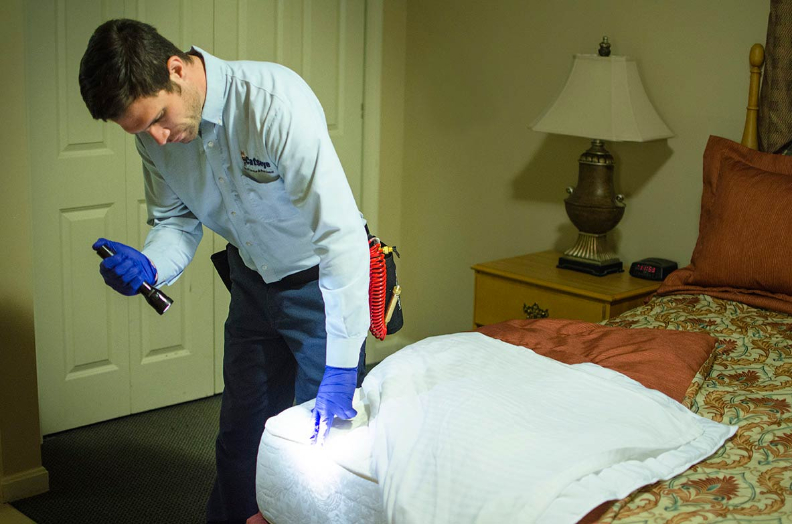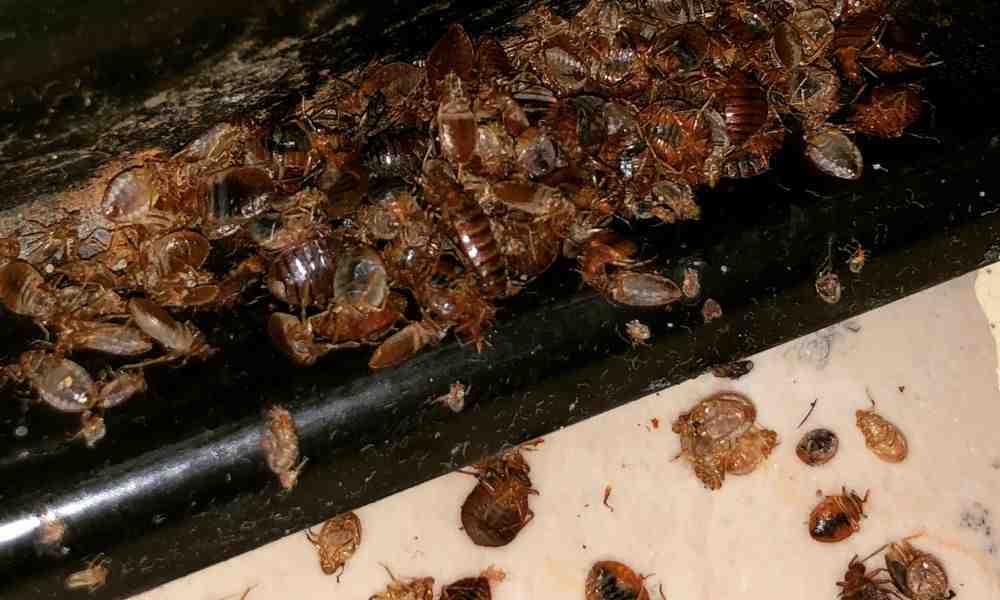Fast Pest Control Arlington VA for Homes and Businesses in Need of Help
Fast Pest Control Arlington VA for Homes and Businesses in Need of Help
Blog Article
Get Enlightened Concerning the Kinds of Bug Control Techniques and Their Benefits for Home Owners
Recognizing the numerous insect control methods offered to property owners is vital for effective bug management. Home owners that are knowledgeable can make strategic selections that not only address bug issues however additionally enhance the total top quality of their living environment.
Chemical Bug Control Techniques
Chemical parasite control techniques are an important element of incorporated insect management approaches for home owners looking for reliable options to pest invasions. These methods involve the application of chemical substances developed to get rid of or discourage bugs that threaten individual building, health, and convenience. Common chemicals used include insecticides, herbicides, fungicides, and rodenticides, each tailored to target certain bugs.
The key benefit of chemical parasite control is its fast performance; many formulations give instant results, reducing pest populaces substantially in a short time. In addition, advances in chemical formulas have caused items that are much more eco-friendly and have reduced poisoning levels for non-target organisms when applied appropriately.

Organic Insect Control Methods
Natural insect control techniques have actually gained importance as house owners look for much safer and more sustainable options to traditional chemical techniques. Biological pest control techniques utilize natural killers, parasites, or virus to take care of parasite populations properly. This method is not just eco friendly however likewise lessens the danger of harm to non-target species, including advantageous pests and wild animals.
Among one of the most common biological control methods entails introducing natural killers into the atmosphere. For instance, ladybugs can be used to regulate aphid populations, while nematodes target soil-dwelling insects like grubs. In addition, parasitoids-- organisms that reside on or within a host-- can be utilized to manage particular insect varieties by laying eggs inside them, eventually resulting in their demise.
An additional approach is making use of biopesticides, which are derived from all-natural products such as minerals, germs, or plants (bed bug exterminator). These items can properly target bugs while presenting marginal risk to humans and animals. Overall, biological pest control techniques offer property owners with an efficient methods of bug monitoring that lines up with eco-friendly principles, promoting a much healthier living environment while reducing reliance on artificial chemicals
Mechanical Pest Control Techniques
Mechanical insect control methods encompass a variety of techniques that literally stop or remove insects without the use of chemicals. These strategies are specifically advantageous for house owners seeking eco-friendly choices while ensuring the security of their space.
One usual technique is using barriers, such as catches, nets, and displays, which prevent insects from going into homes or particular locations. Setting up window screens can successfully maintain useful site bugs out, while utilizing physical barriers around yards can prevent bigger insects like deer or rabbits. In addition, mechanical catches developed for rodents can capture and eliminate these parasites without the demand for harmful materials.
One more efficient strategy entails the usage of vacuum cleaners and mops to eliminate parasites straight from surfaces. Regular cleaning and maintenance can dramatically decrease parasite populations by removing food resources and hiding places. Utilizing gadgets like ultrasonic bug repellents can hinder different parasites via noise waves that are unpleasant discover here to them however faint to people.
Social Pest Control Practices
Social bug control methods concentrate on changing the environment and administration techniques to create problems that are less for pest problems. These techniques are basic in maintaining a well balanced ecosystem and decreasing the dependence on chemical treatments. By changing agricultural techniques, homeowners can efficiently deter insects while advertising plant health.
One typical method consists of crop turning, which disrupts the life cycles of bugs by altering the sorts of plants grown in a particular location (bed bug exterminator). This not just reduces pest populations but also boosts dirt health and wellness. Furthermore, intercropping-- planting varied plants in closeness-- can perplex parasites and minimize their capacity to situate their preferred host plants
Water management is an additional vital facet of cultural techniques. Proper irrigation methods can protect against standing water, which serves as a breeding place for insects and other insects. Furthermore, keeping cleanliness around the home, such as on a regular basis eliminating particles and food waste, can considerably lower bug destination.
Integrating these social methods into a thorough insect monitoring approach enables homeowners to produce an atmosphere that naturally discourages parasites, thereby improving the efficiency of various other control approaches while advertising lasting horticulture and landscaping.

Integrated Bug Management Approaches
Integrated Pest Administration (IPM) stands for an all natural method that combines different approaches to properly take care of insect populations while decreasing ecological impact. This approach integrates biological, social, physical, and chemical practices to achieve lasting insect control. By evaluating pest populaces and their natural enemies, IPM stresses monitoring and recognizing insects before applying control actions.
One of the core principles of IPM is using limits, which establish the degree of parasite task that calls for intervention. This ensures that therapies are applied just link when needed, lowering the reliance on chemical pesticides. Organic control methods, such as presenting all-natural killers or parasites, operate in conjunction with social techniques like plant rotation and environment control to interrupt pest life process.
Additionally, IPM encourages making use of least-toxic chemical choices when treatment is essential, prioritizing products that posture minimal risk to non-target organisms and the environment. For property owners, taking on IPM comes close to not only improves the effectiveness of parasite management yet also promotes a healthier living setting, fostering biodiversity and decreasing chemical exposure. Ultimately, IPM equips home owners to make educated decisions that balance parasite control with ecological duty.
Conclusion
In conclusion, recognizing the various parasite control methods encourages property owners to make enlightened choices relating to pest monitoring. Each technique-- chemical, biological, mechanical, cultural, and incorporated insect administration-- uses distinct benefits that provide to different demands and choices.
Recognizing the various bug control techniques offered to homeowners is vital for efficient parasite administration.Chemical bug control approaches are an important part of integrated bug monitoring approaches for homeowners looking for efficient services to pest invasions. Overall, biological insect control strategies provide homeowners with a reliable ways of insect management that straightens with environmental principles, advertising a healthier living atmosphere while minimizing reliance on artificial chemicals.
Cultural pest control practices concentrate on modifying the atmosphere and management techniques to produce problems that are less favorable to pest problems.In conclusion, comprehending the various parasite control methods equips homeowners to make informed choices concerning pest monitoring.
Report this page